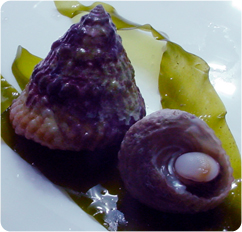|
Mark Martin on Acclimating Snails
Mark Martin is Director of Marine Ornamental Research at Blue Zoo
 |
| Astraea snails are common clean-up crew snails that require a slow drip acclimitization. |
TI get a lot of questions about how to properly acclimate snails. In previous “Ask Mark” columns, I’ve talked about why we usually ship snails with a moist towel instead of in water, but we have not addressed how best to acclimate snails, so this week, we’ll take a closer look at that.
At Blue Zoo, we recommend drip acclimating all animals, but it is really essential when it comes to snails and crabs. Without getting into too much information, you should know that snails have very complex circulatory systems that can be easily damaged by rapid changes in salinity, temperature and pH.
Because we ship snails in much less water, they can be easily acclimated in their original bag. Simply cut open the top of the shipping bag to allow water from a drip line (which we include with every order) to be added to the bag. Adjust the drip rate (by tightening or loosening one or two overhand knots in the drip line) to about one drop per second. This should create about an inch of water over a period of one hour in the shipping bag. For these creatures slower truly is better.
When acclimating any animal, be present through the whole acclimatization procedure and make sure you have extra, properly prepared and aged saltwater on hand (you will not add the acclimatization water back into the tank). For snails, because of their complex circulatory system, a one hour drip acclimatization period should be the minimum and longer is always better. Because there is no shipping water to deal with, you do not need to partially empty the bag periodically as you do with fishes.
Once acclimated, carefully place the snails by hand on the substrate. Try to place them so they are not upside down. While some snails will begin moving immediately, others may not move for a day. If a snail has not moved for more than a day, pick it up and smell it—you will know by the smell if it is alive or not. Keep in mind that large dead snails (like some turbo snails that can reach six inches) can place a heavy load on your filtration system if you allow them to decompose in your aquarium.
Remember, with snails GO SLOW!
If you have a question you would like answered in my weekly “Ask Mark” column, please e-mail me at mark@bluezooaquatics.com. To see all of the past “Ask Mark” tips, please visit the Blue Zoo Aquatics Resources page.
Published 29 July 2008. © Blue Zoo Aquatics
|